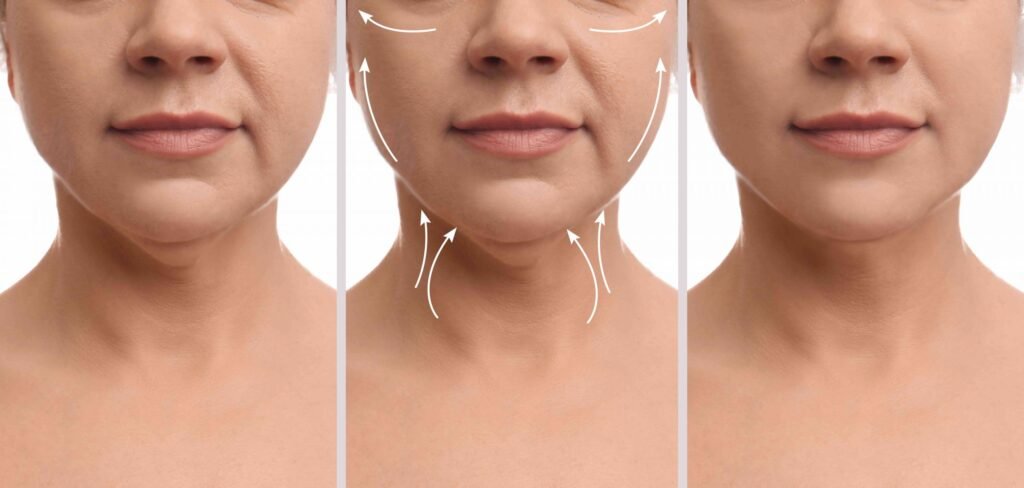As we age, one of the first areas to show signs of aging is the neck. Loose skin, muscle banding, and accumulated fat can all contribute to what’s often referred to as a “turkey neck” or “double chin.” A neck lift, or lower rhytidectomy, is a surgical procedure designed to restore a smoother, more youthful contour to the neck and jawline.
In this post, we’ll explore everything you need to know about neck lifts—from how they work to who’s a good candidate and what recovery looks like.
What Is a Neck Lift?
A neck lift is a cosmetic surgical procedure that targets the visible signs of aging in the jawline and neck. It involves tightening the underlying muscles, removing excess skin, and often reducing fat deposits to create a firmer, more defined appearance.
Depending on the specific concerns and goals, a neck lift may include:
- Platysmaplasty: Tightening or realigning the platysma muscles that cause vertical neck bands.
- Cervicoplasty: Removing excess, sagging skin.
- Liposuction: Reducing fat deposits under the chin or along the neck.
Who Is a Good Candidate for a Neck Lift?
You might be a good candidate for a neck lift if you:
- Have loose or sagging skin under the chin or along the jawline
- Notice muscle banding or visible neck cords
- Feel self-conscious about a double chin despite a healthy weight
- Have good general health and realistic expectations
Patients often seek neck lifts to complement a facelift or as a standalone procedure if the aging is more pronounced in the neck area.
Neck Lift vs. Facelift: What’s the Difference?
While both procedures address signs of aging, a facelift targets the mid-to-lower face, including the cheeks and jawline. A neck lift specifically improves the contours of the neck and under-chin area. They are often performed together for comprehensive rejuvenation but can be done independently based on the patient’s needs.
The Neck Lift Procedure: What to Expect
The surgery typically takes 2 to 3 hours and is performed under local anesthesia with sedation or general anesthesia. Here’s a general overview:
- Incisions: Typically made behind the ears and under the chin.
- Tightening and Removal: The surgeon tightens underlying muscles, trims excess skin, and may use liposuction to remove fat.
- Closure: Incisions are carefully sutured to minimize visible scarring.
Recovery and Downtime
Most patients can return to non-strenuous activities within 10 to 14 days, though full healing may take a few weeks. Here’s what to expect:
- Swelling and bruising are common during the first week.
- A compression garment may be worn to support healing.
- You’ll be advised to avoid heavy lifting or vigorous exercise for several weeks.
- Final results become more visible as swelling subsides, typically within 4 to 6 weeks.
Neck Lift Results: What Can You Expect?
A well-performed neck lift offers:
- A more defined jawline
- Smoother, firmer neck contours
- A rejuvenated, youthful appearance
Results are long-lasting, though the natural aging process will continue. Maintaining a healthy lifestyle, including sun protection and skin care, helps prolong your results.
Non-Surgical Alternatives to a Neck Lift
Not ready for surgery? There are several non-surgical options available:
- Kybella: Injectable treatment that dissolves fat under the chin
- Ultherapy or RF microneedling: Uses ultrasound or radiofrequency energy to tighten skin
- Botox: Temporarily relaxes platysma bands
These treatments are best for mild to moderate concerns and won’t produce the dramatic results of surgery.
Final Thoughts
A neck lift is a powerful solution for individuals seeking to correct sagging, crepey skin, or excess fat in the neck area. When performed by a board-certified plastic surgeon, it can take years off your appearance and restore a sleek, youthful profile.
Considering a neck lift? Schedule a consultation with an experienced cosmetic surgeon to explore your options and determine the best treatment plan tailored to your goals.




